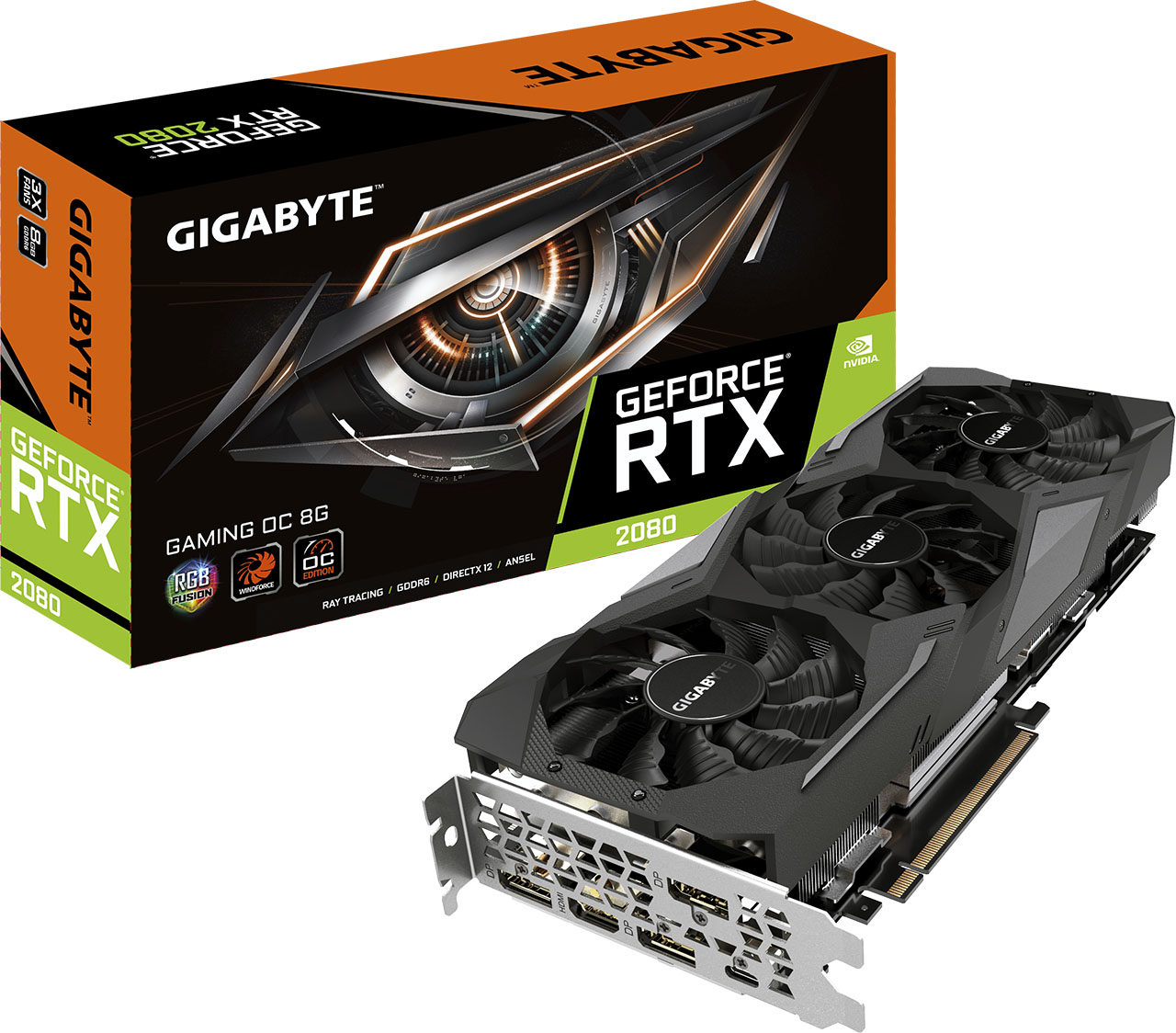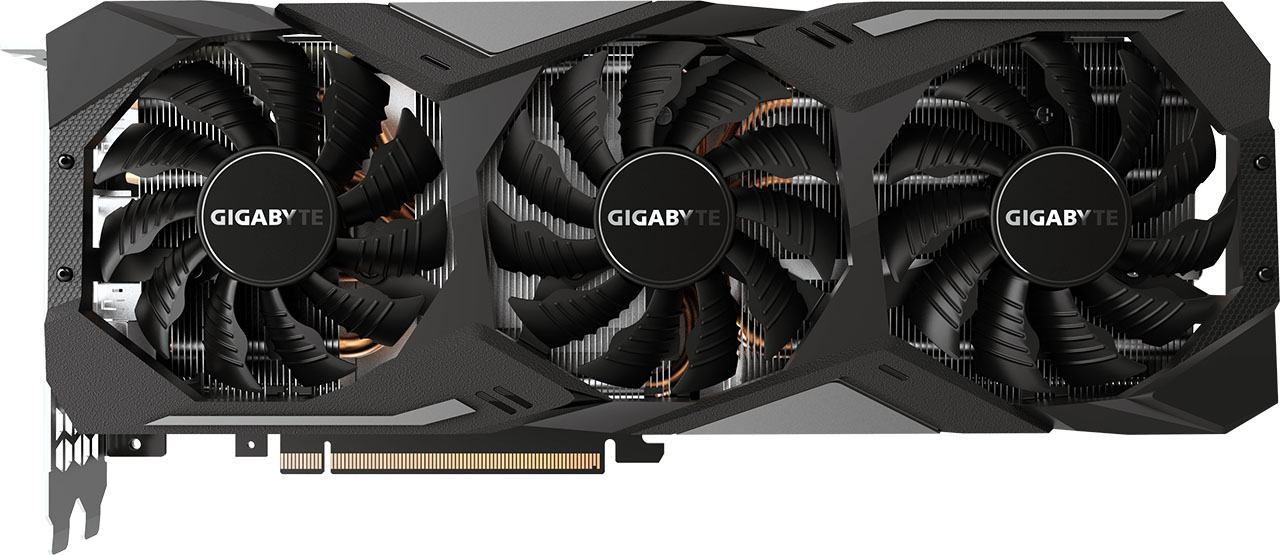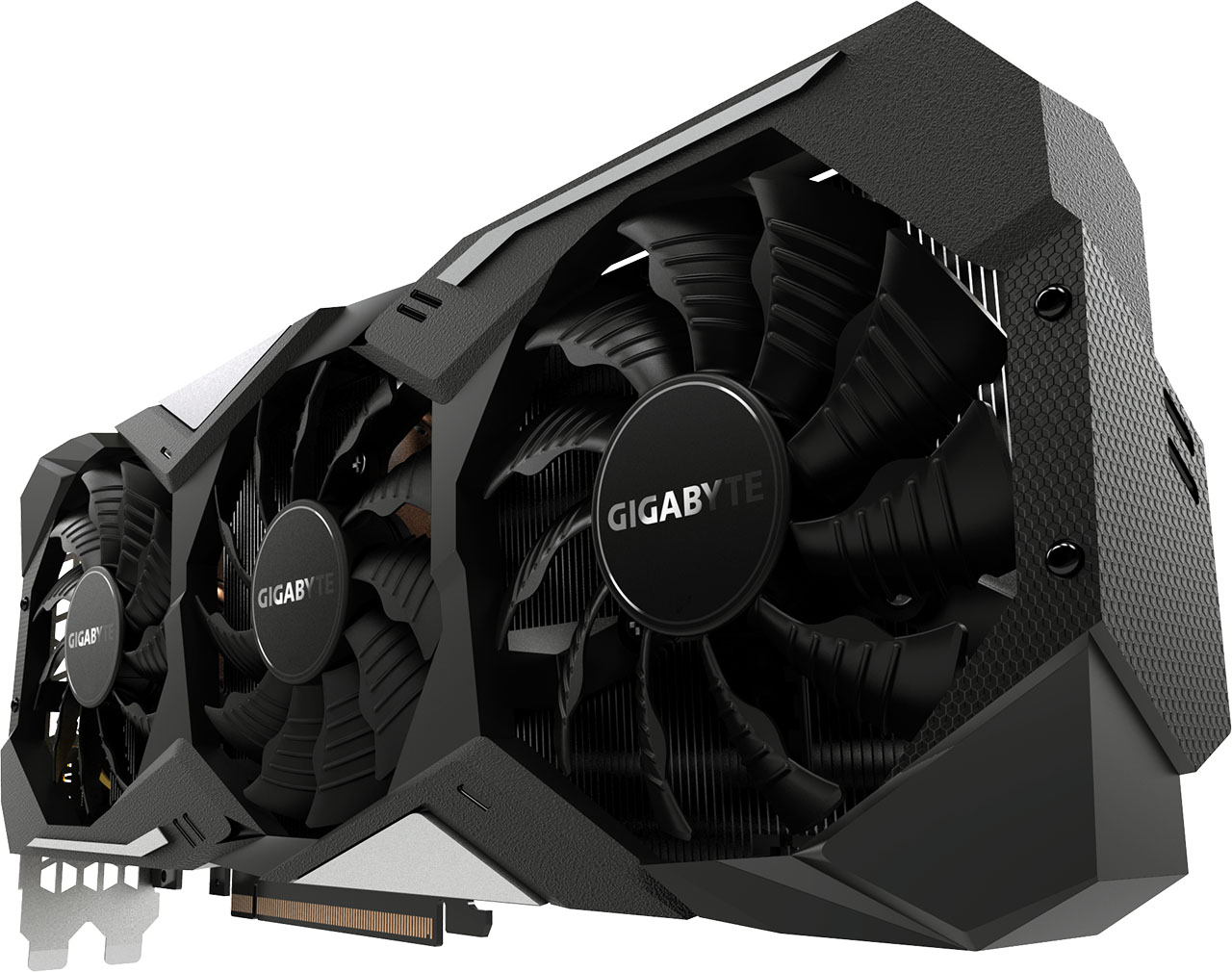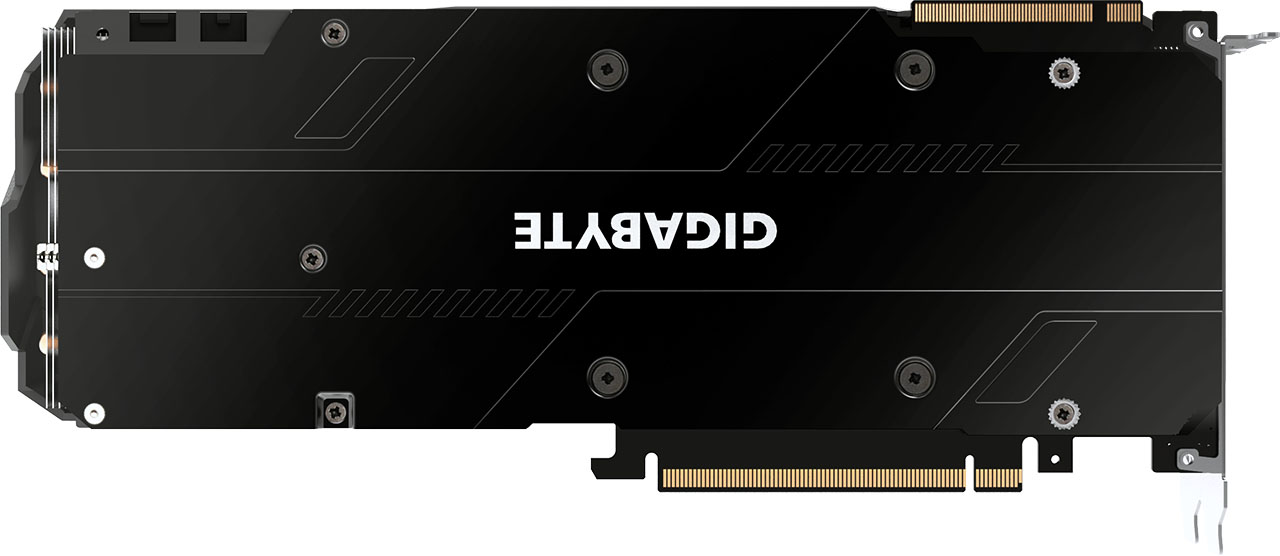Tom's Hardware Verdict
Gigabyte’s GeForce RTX 2080 Gaming OC 8G offers great performance at 2560x1440 on high-refresh displays, the luxury of a semi-passive fan mode, and a quiet cooling solution. Now that it costs less than Nvidia’s sturdily-built Founders Edition model, we're willing to consider it a viable alternative for enthusiasts looking to save some money.
Pros
- +
Runs cooler than Nvidia's Founders Edition design
- +
Higher GPU Boost rating than Nvidia’s Founders Edition design
- +
Semi-passive fan mode facilitates silence and low power consumption at idle
- +
Configurable lighting via bundled RGB Fusion app
- +
Lowest price among third-party GeForce RTX 2080s
Cons
- -
Cheaper-feeling construction than Founders Edition card
- -
Triple-slot cooler takes up more space
Why you can trust Tom's Hardware
Gigabyte GeForce RTX 2080 Gaming OC 8G Review
Update, 11/23/18: Due to depleted inventory of GeForce GTX 1080 Ti cards and falling prices on third-party Turing-based models, we are revisiting our impressions of Gigabyte's GeForce RTX 2080 Gaming OC 8G and updating value comparisons throughout the review.
Just weeks after the launch of Nvidia’s GeForce RTX 2080 and 2080 Ti cards, previous-gen 1080 Ti boards based on the Pascal architecture have almost completely disappeared.
Perhaps that’s alright, though. The least-expensive GeForce RTX 2080 now sells for $750 (£585 in the UK), which is still higher than the price Nvidia told us to expect when its Turing-based line-up debuted in the U.S., but substantially less expensive in the UK. And the Gigabyte GeForce RTX 2080 Gaming OC 8G we’re reviewing today even includes a copy of Battlefield V. Clearly, Nvidia’s board partners are trying harder to drum up interest in GeForce RTX 2070 and 2080 (the 2080 Ti remains woefully overpriced).
When we originally published our review of the GeForce RTX 2080 Gaming OC 8G, it was priced around $830 (£750 in the UK). In the weeks that followed, however, it fell to $750 (£585 in the UK). Those prices are far more attractive compared to Nvidia's own Founders Edition design. After all, Gigabyte offers a highly-capable Windforce 3X thermal solution, a semi-passive fan mode for absolute silence at idle, configurable lighting, and a four-year warranty.
Meet The GeForce RTX 2080 Gaming OC 8G
Despite the GeForce RTX 2080 Gaming OC 8G’s commanding size, it’s not that heavy of a graphics card. Nvidia’s Founders Edition weighs 2.8 pounds (1.3 kg). The Zotac Gaming GeForce RTX 2080 AMP dips in at 2.5 pounds (1.2 kg). Meanwhile, our scale claims the Gigabyte card weighs just 2.12 pounds (0.98 kg). Less heft usually means a lighter heat sink cooling the GPU. But good fans can help counter a lack of mass.
The GeForce RTX 2080 Gaming OC 8G measures 11.3 x 4.4 x 2 inches (28.7 x 11.3 x 5 cm), meaning it occupies three expansion slots worth of space on your motherboard (along with a bit of room above/behind the card due to its backplate). For some enthusiasts, this isn’t an issue. The extra width is used for a taller heat sink, which improves cooling. Gamers with smaller cases or multiple GPUs will have a harder time accommodating such a configuration though, especially when it exhausts waste heat out the card’s top and down toward the motherboard through vertically-oriented fins.
Gigabyte uses plastic gratuitously across its shroud, which houses three 82mm fans. These fans blow down through an array of aluminum fins split into three sections. The section closest to the display outputs sits up over the PCB. It doesn’t make contact with any on-board components, but rather helps dissipate thermal energy from four heat pipes touching the TU104 processor. The middle section rests on top of Nvidia’s GPU. Six pipes cross through it. Below the fins and heat pipes, a plate mounts to the PCB. Thermal pads between it and the GDDR6 modules help cool Micron’s memory. The third section is the largest, extending from the power circuitry out over the PCB’s back edge by almost a centimeter. It also has four pipes passing through, along with a shaped metal plate underneath drawing heat from the VRMs through pads.
Get Tom's Hardware's best news and in-depth reviews, straight to your inbox.
The trio of fans, the six copper heat pipes, and the direct-touch sink combine to form what Gigabyte calls its Windforce 3X cooling system. As part of this system, the outside fans spin counter-clockwise, while the middle fan rotates clockwise. Turbulence is purportedly kept to a minimum, generating less competing airflow from adjacent fans. Then, at idle, the fans stop spinning altogether through a feature that Gigabyte calls 3D Active Fan. Enthusiasts who prefer to maintain lower idle temperatures can disable 3D Active Fan through Gigabyte’s Aorus Engine software. Frankly, the fans make so little noise at idle that we’d prefer to keep them spinning (even though the semi-passive mode is one of this card’s competitive advantages).
The Nvidia and Zotac cards we already reviewed are big and heavy, justifying base plates that help keep both cards rigid. Gigabyte’s doesn’t weigh as much, so it doesn’t run quite the same risk of flexing in a mobile LAN box. However, the GeForce RTX 2080 Gaming OC 8G’s thermal solution moves a lot more relative to its PCB when you press on one side of the fan shroud or the other.
Gigabyte does add a metal plate to the back of its Gaming OC card. Seven screws keep it pinned up against the PCB, with thick chunks of thermal pad behind the GDDR6 memory and power circuitry helping circumvent hot-spots.
Up top, Gigabyte’s GeForce RTX 2080 Gaming OC 8G hosts a single NVLink connection covered by a think piece of plastic, a company logo in the middle, and GeForce RTX branding on the other end. Downloadable RGB Fusion software allows you to control the color and effect of LED back-lighting the Gigabyte logo, similar to what we saw on Zotac’s Gaming GeForce RTX 2080 AMP. Eight- and six-pin power connectors are rotated 180 degrees to avoid conflict with the form-fitted heat sink, and special white LEDs mounted to the PCB light up to tell you if something is wrong with the auxiliary power. We only saw these illuminate at boot.
Display outputs on Gigabyte’s card match the GeForce RTX 2080 Founders Edition: you get three full-sized DisplayPort 1.4 connectors, one HDMI 2.0 port, and VirtualLink support via USB Type-C. A fairly free-flowing grille isn’t functionally significant, unfortunately, since the cooler’s fins move air perpendicular to the bracket.
| Row 0 - Cell 0 | GeForce RTX 2080 Ti FE | Gigabyte GeForce RTX 2080 Gaming OC 8G | GeForce RTX 2080 FE | GeForce GTX 1080 Ti FE |
| Architecture (GPU) | Turing (TU102) | Turing (TU104) | Turing (TU104) | Pascal (GP102) |
| CUDA Cores | 4352 | 2944 | 2944 | 3584 |
| Peak FP32 Compute | 14.2 TFLOPS | 10.7 GFLOPS | 10.6 TFLOPS | 11.3 TFLOPS |
| Tensor Cores | 544 | 368 | 368 | N/A |
| RT Cores | 68 | 46 | 46 | N/A |
| Texture Units | 272 | 184 | 184 | 224 |
| Base Clock Rate | 1350 MHz | 1515 MHz | 1515 MHz | 1480 MHz |
| GPU Boost Rate | 1635 MHz | 1815 MHz | 1800 MHz | 1582 MHz |
| Memory Capacity | 11GB GDDR6 | 8GB GDDR6 | 8GB GDDR6 | 11GB GDDR5X |
| Memory Bus | 352-bit | 256-bit | 256-bit | 352-bit |
| Memory Bandwidth | 616 GB/s | 448 GB/s | 448 GB/s | 484 GB/s |
| ROPs | 88 | 64 | 64 | 88 |
| L2 Cache | 5.5MB | 4MB | 4MB | 2.75MB |
| TDP | 260W | 225W | 225W | 250W |
| Transistor Count | 18.6 billion | 13.6 billion | 13.6 billion | 12 billion |
| Die Size | 754 mm² | 545 mm² | 545 mm² | 471 mm² |
| SLI Support | Yes (x8 NVLink, x2) | Yes (x8 NVLink) | Yes (x8 NVLink) | Yes (MIO) |
What lives under the GeForce RTX 2080 Gaming OC 8G’s hood is already well-known. We dug deep into the TU104 graphics processor and its underlying architecture in Nvidia’s Turing Architecture Explored: Inside the GeForce RTX 2080. Gigabyte takes the same graphics processor with 2,944 of its CUDA cores enabled and bumps the typical GPU Boost rating up slightly to 1,815 MHz in Gaming mode and 1,830 MHz in OC mode (versus the Founders Edition card’s 1800 MHz). Eight gigabytes of GDDR6 memory move data at 14 Gb/s, matching Nvidia’s reference design. As you might expect, then, performance comparisons between the two models fall within a single-digit percentage variance.
How We Tested Gigabyte’s GeForce RTX 2080 Gaming OC 8G
While many users will attach Gigabyte’s card to a system with the latest Intel or AMD processor, our graphics station still employs an MSI Z170 Gaming M7 motherboard with an Intel Core i7-7700K CPU at 4.2 GHz. The processor is complemented by G.Skill’s F4-3000C15Q-16GRR memory kit. Crucial’s MX200 SSD remains, joined by a 1.4TB Intel DC P3700 loaded down with games.
As far as competition goes, we can assume that GeForce RTX 2080 and all of the partner boards based on the same design are bested by GeForce RTX 2080 Ti and Titan V, both of which we have in our test pool. We also compare GeForce GTX 1080 Ti, Titan X, GeForce GTX 1080, GeForce GTX 1070 Ti, and GeForce GTX 1070 from Nvidia. AMD is represented by the Radeon RX Vega 64 and 56.
Our benchmark selection now includes Ashes of the Singularity: Escalation, Battlefield 1, Civilization VI, Destiny 2, Doom, Far Cry 5,Forza Motorsport 7, Grand Theft Auto V, Metro: Last Light Redux, Rise of the Tomb Raider, Tom Clancy’s The Division, Tom Clancy’s Ghost Recon Wildlands, The Witcher 3 and World of Warcraft: Battle for Azeroth.
The testing methodology we're using comes from PresentMon: Performance In DirectX, OpenGL, And Vulkan. In short, these games are evaluated using a combination of OCAT and our own in-house GUI for PresentMon, with logging via AIDA64.
All of the numbers you see in today’s piece are fresh, using updated drivers. For Nvidia, we’re using build 411.51 for GeForce RTX 2080 Ti and 2080. Zotac’s Gaming GeForce RTX 2080 AMP is tested on 411.70, while Gigabyte’s GeForce RTX 2080 Gaming OC 8G employs 416.34. The other cards were tested with build 398.82. Titan V’s results were spot-checked with 411.51 to ensure performance didn’t change. AMD’s cards utilize Crimson Adrenalin Edition 18.8.1, which was the latest at test time.
Interestingly, there is a bug in The Witcher 3 that was introduced a couple of builds ago. It causes flickering through our benchmark scene, where the background appears to go white and come back. This issue doesn’t seem to affect performance, but it’s certainly distracting. Nvidia released a hotfix driver on October 28 to address it.
MORE: Best Graphics Cards
MORE: Desktop GPU Performance Hierarchy Table
MORE: All Graphics Content
Current page: Gigabyte GeForce RTX 2080 Gaming OC 8G Review
Next Page Performance Results: 2560x1440-
PapaCrazy The subtitle on the main page cut off the word "passive" so now it just reads "Turing Goes Semi". Sly jab at the memory woes?Reply -
looprollpcservice Sorry but from what i read in your review i found that you re a little misinformed.....Reply
You re writing in cons "Triple-slot cooler takes up more space" first the gigabyte gaming 2080oc is 2.5 slot and second to that if your case is a 2 slot card, then from gigabyte you can buy rtx 2080 windforce which is a 2 slot card and is cheaper too -
cangelini Reply
A 2.5-slot cooler monopolizes three slots worth of space. If room for expansion is a priority, that makes it a con.21459851 said:Sorry but from what i read in your review i found that you re a little misinformed.....
You re writing in cons "Triple-slot cooler takes up more space" first the gigabyte gaming 2080oc is 2.5 slot and second to that if your case is a 2 slot card, then from gigabyte you can buy rtx 2080 windforce which is a 2 slot card and is cheaper too -
nabeelio Would have been helpful to have the 2070 in benchmarks, I'm trying to decide between the two.Reply






